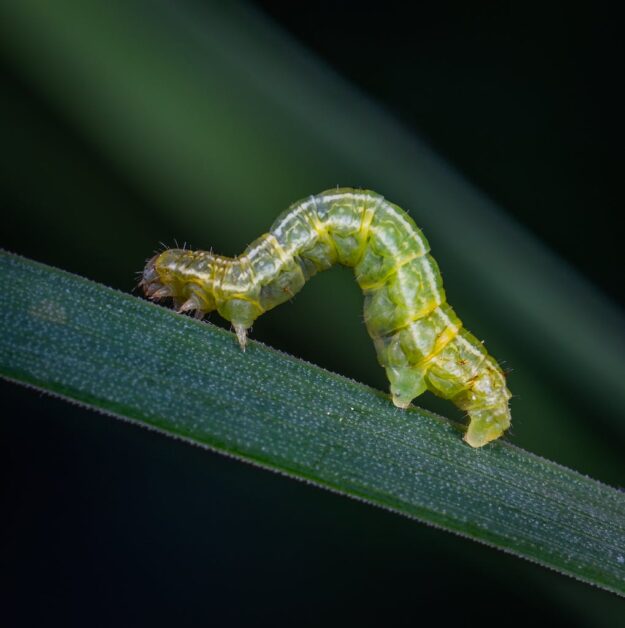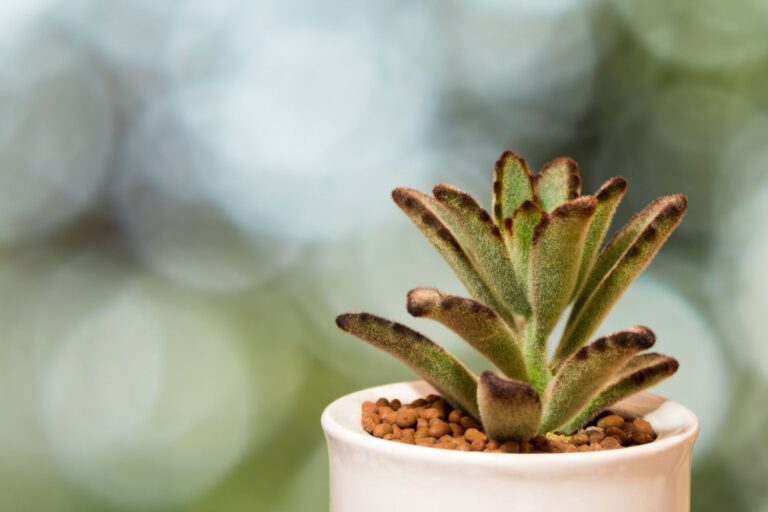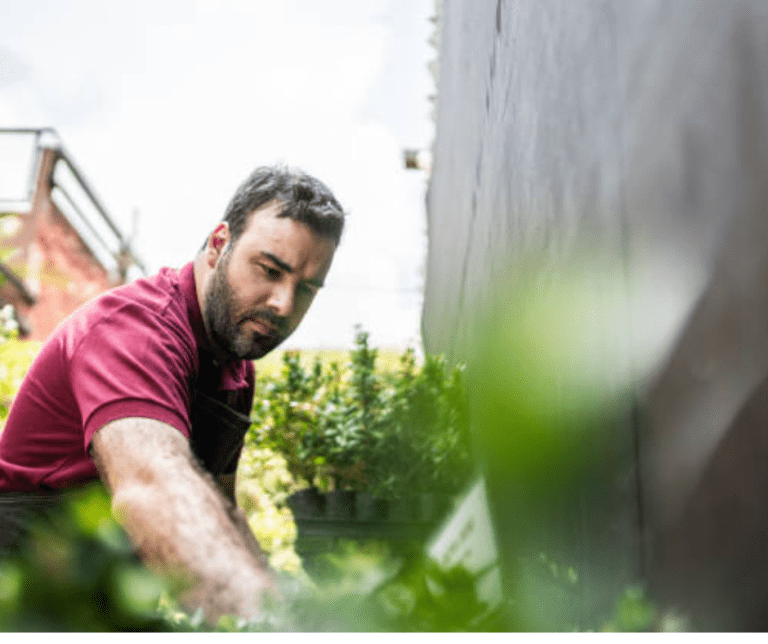How to Eradicate Cutworms: 5 Effective Ways to Manage and Stop These Pests from Your Plants
Table of Contents
Understanding the Threat: A Brief Overview of Cutworms and Their Impact on Plants
Cutworms, also known as caterpillars, belong to the Noctuidae family and can be a significant threat to plants in gardens and agricultural fields. These voracious pests feed on the stems and leaves of various plant species, potentially causing severe damage or even death to young seedlings. Cutworms are most active during the night, making it challenging to spot them in action during the daytime.
The impact of cutworms on plants can be devastating. They can chew through young stems at ground level, causing the affected plants to wither and die. In severe infestations, entire rows of crops can be wiped out, leading to significant yield losses. Additionally, cutworm feeding weakens the plants, making them more susceptible to other diseases and pests. Furthermore, some species of cutworms are known to burrow into the soil and feed on the roots of plants, further exacerbating the damage.
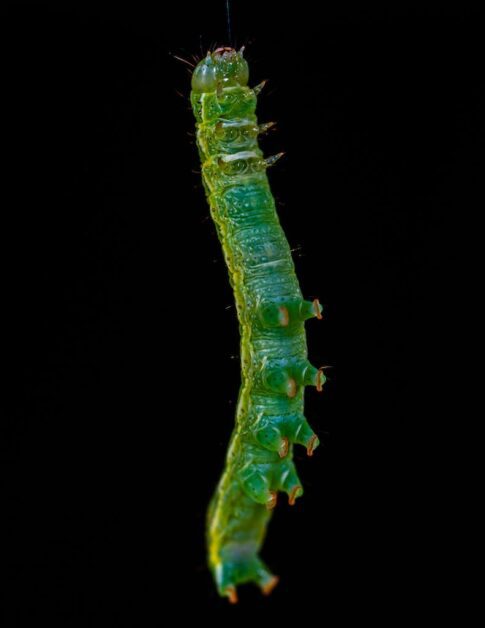
Identifying Cutworm Infestations: Signs and Symptoms to Look Out For
Cutworms are a common nuisance for gardeners, wreaking havoc on plants and causing significant damage. Identifying a cutworm infestation is crucial for effective management and prevention. One telltale sign of cutworm activity is the presence of young plants that have been severed at the base, often appearing as if they have been neatly cut with a pair of scissors. The cutworm larvae typically feed at night, hiding in the soil during the day, further complicating the identification process.
Another red flag to look out for is the presence of small, brown, cylindrical caterpillars in the garden. These caterpillars have a distinct smooth body and can range in color from pale green to brown or black, depending on the species. These pests are nocturnal and tend to feed at ground level, severing plants at or just below the soil surface. Monitoring for these signs and symptoms can help gardeners take proactive measures to protect their plants from further damage.
Creating a Cutworm-Free Zone: Preparing Your Garden for Prevention
Creating a Cutworm-Free Zone: Preparing Your Garden for Prevention
To ensure a bountiful and thriving garden, it is essential to take proactive measures against cutworm infestations. These voracious pests have a tendency to wreak havoc on young seedlings, devouring them from the stems or roots. However, by implementing a few preventive strategies, you can create a cutworm-free zone and safeguard your plants.
A crucial first step in preparing your garden for cutworm prevention is to maintain cleanliness. Remove any garden debris, such as fallen leaves or dead plant matter, as they can provide hiding spots and a conducive environment for these pests. Additionally, regularly cultivate your soil to disrupt the cutworms’ habitat and expose them to natural predators. By practicing good sanitation practices, you can significantly reduce the chances of a cutworm infestation.
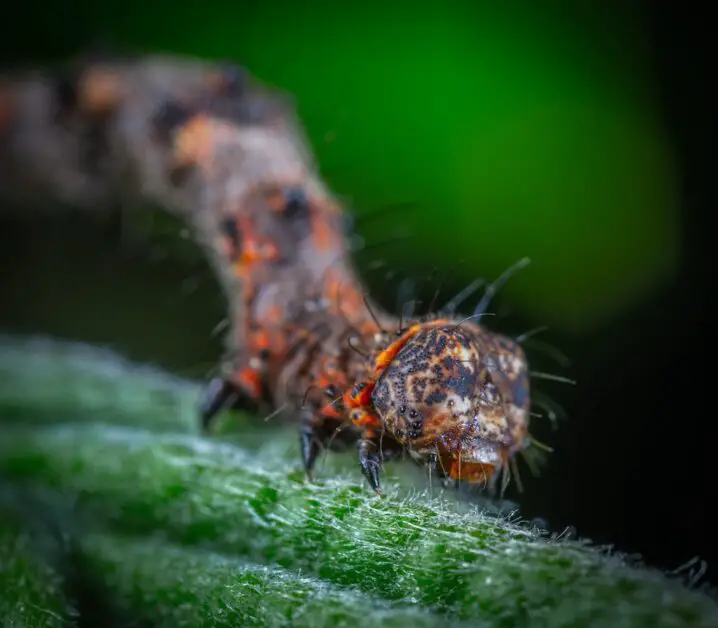
Natural Predators: Encouraging Beneficial Insects to Control Cutworm Populations
Natural predators play a crucial role in controlling cutworm populations in gardens. By encouraging beneficial insects, gardeners can utilize nature’s pest control methods to minimize the damage caused by these destructive larvae.
One effective way to attract beneficial insects is by providing a diverse range of flowering plants in the garden. These flowers act as a food source and habitat for predators such as parasitic wasps, lacewings, and ground beetles. These insects prey on cutworms and help keep their numbers in check. Additionally, planting herbs like dill, fennel, and cilantro can attract hoverflies, whose larvae are voracious predators of cutworms.
It is important to note that encouraging natural predators alone may not completely eradicate cutworm populations, especially in severe infestations. However, by incorporating this method into an integrated pest management approach, gardeners can greatly reduce the impact of cutworms and maintain a more balanced ecosystem.
Barrier Methods: Physical Strategies to Keep Cutworms Away from Your Plants
To protect your plants from cutworms, implementing barrier methods can be highly effective. These physical strategies create a barrier between the cutworms and your plants, preventing them from reaching the vulnerable stems and leaves. One popular option is to use collars around the base of your plants. These collars can be made from materials such as cardboard, paper, or aluminum foil. Simply wrap the collar around the stem of the plant, burying it slightly into the soil to ensure that the cutworms cannot crawl over it. Additionally, you can use barriers such as plastic or metal rings, which can be placed around individual plants to create a deterrent for cutworms. These barriers should extend a few inches above and below the soil line to prevent the cutworms from accessing your plants.
Another effective physical strategy is to create a trench around your garden bed. Dig a trench that is about 4-6 inches deep and 4-6 inches wide around the perimeter of your plants. This trench acts as a physical barrier, making it difficult for cutworms to access your plants. To enhance the effectiveness of the trench, consider lining it with materials like sand, gravel, or diatomaceous earth, which have abrasive textures that can deter cutworms from crossing. It’s important to regularly inspect the trench and repair any gaps or breaks to ensure its efficacy in keeping cutworms at bay. However, it’s worth noting that while these physical strategies can be highly effective, they may not provide complete protection against determined cutworms. Thus, it’s important to combine barrier methods with other preventive measures for comprehensive cutworm control.
| Barrier Method | Description | Pros | Cons |
|---|---|---|---|
| Collars | Collars placed around plant stems to block access | Effective at preventing cutworm access | Labor-intensive to install and maintain |
| Cardboard Collars | Cardboard strips placed around plant stems | Affordable and easy to make | May degrade quickly, requiring replacement |
| Aluminum Foil | Wrapping plant stems with aluminum foil | Reflects light, possibly deterring pests | Can be cumbersome and visually unappealing |
| Plastic Bottle Rings | Cut sections of plastic bottles placed around stems | Recycles materials | Labor-intensive to prepare and install |
| Copper Tape | Wrapping plant containers with copper tape | May deter cutworms due to reaction with slime | Expensive compared to other methods |
| Diatomaceous Earth | Sprinkling diatomaceous earth around plant stems | Non-toxic and safe for plants | Needs reapplication after rain or watering |
Organic Insecticides: Using Environmentally-Friendly Products to Combat Cutworms
Organic insecticides can be an effective tool in combating cutworm infestations while still prioritizing environmentally-friendly practices. These products are derived from natural sources and contain substances that target cutworms specifically, minimizing the impact on beneficial insects and other organisms in your garden ecosystem. By incorporating organic insecticides into your pest control strategy, you can effectively manage cutworm populations and protect your plants without compromising the health of the environment.
One popular organic insecticide option is Bacillus thuringiensis (Bt). This naturally occurring bacterium produces proteins that are toxic to certain insect larvae, including cutworms. When applied to the leaves of vulnerable plants, Bt is ingested by the cutworms, causing damage to their stomach lining and eventually leading to their death. Bt is considered highly effective against cutworms and has minimal impact on non-target organisms, making it a valuable tool for organic gardeners. It is important to note, however, that Bt is generally most effective on young cutworm larvae, so early detection and intervention are crucial for optimal results.
• Bacillus thuringiensis (Bt) is a popular organic insecticide option
• Bt produces proteins toxic to certain insect larvae, including cutworms
• When applied to vulnerable plants, it is ingested by the cutworms and causes damage to their stomach lining
• Bt is highly effective against cutworms and has minimal impact on non-target organisms
• Early detection and intervention are crucial for optimal results with Bt
Crop Rotation: Disrupting Cutworm Life Cycles to Minimize Damage
Crop rotation is a well-established practice in agriculture that can help minimize damage caused by cutworm infestations. By strategically rotating crops, gardeners can disrupt the life cycles of cutworms and reduce their overall population. Cutworms have specific preferences for certain plant varieties, and by switching to crops that are less attractive to these pests, gardeners can effectively deter them from laying their eggs and feeding on the plants.
The key to successful crop rotation for cutworm management is understanding the life cycle of these pests. Cutworms go through several stages of development, including egg, larva, pupa, and adult. During the larval stage, they cause the most damage by feeding on plant stems and roots. By rotating crops, gardeners can break the cycle by changing the location of vulnerable plants, thus reducing the likelihood of attracting cutworms to specific areas. This also disrupts the pests’ ability to find suitable food sources, forcing them to move away from the protected plants.
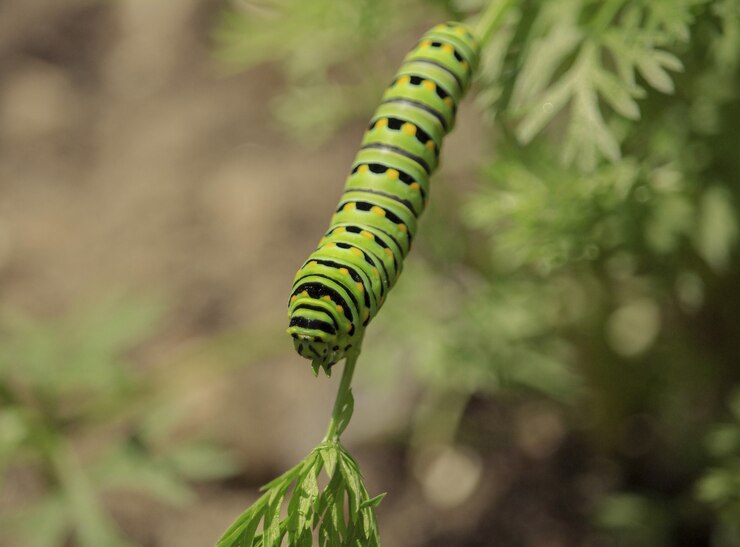
Companion Planting: Harnessing the Power of Plant Relationships for Cutworm Control
Companion planting is a time-honored technique that harnesses the power of plant relationships to control cutworm populations in your garden. By strategically pairing certain plant species together, you can create a natural defense system against these voracious pests. The concept behind companion planting is simple: certain plants emit odors or release compounds that repel or confuse cutworms, effectively reducing their ability to cause damage. Additionally, some plant combinations can attract beneficial insects that prey on cutworms, further enhancing your garden’s protection.
One effective example of companion planting for cutworm control is the pairing of herbs and vegetables. Herbs like rosemary, thyme, and sage have strong fragrances that repel cutworms, while vegetables like tomatoes, peppers, and onions have been found to deter these pests when grown alongside herbs. This symbiotic relationship not only discourages cutworms from attacking your plants but also offers the added benefit of providing a diverse and flavorful harvest. By intermixing the right combinations of plants, you can create a naturally pest-resistant environment that supports the overall health and productivity of your garden.
Cultural Practices: Techniques to Make Your Garden Less Attractive to Cutworms
Cultural practices play a significant role in managing cutworm populations in your garden. By implementing techniques that make your garden less attractive to cutworms, you can effectively reduce infestations and protect your plants. One such technique is practicing good garden hygiene.
Maintaining a clean and tidy garden environment helps to discourage cutworms from taking up residence. Remove any plant debris and weeds regularly, as these can provide hiding places for cutworms and their eggs. Additionally, keep your garden free from excessive moisture, as wet conditions can attract cutworms. By implementing these simple cultural practices, you can create an environment that is less appealing to cutworms and significantly reduce the risk of infestations.
Handpicking and Trapping: Manual Removal Methods for Targeted Cutworm Control
Handpicking and trapping are manual removal methods that can effectively control cutworm infestations in a targeted manner. By physically removing cutworms from your plants, you can directly address the problem without the use of insecticides or other chemicals.
To handpick cutworms, inspect your plants during the early morning or evening hours when they are most active. Look for signs of cutworm damage, such as chewed leaves or cut stems near the soil surface. Once you locate a cutworm, gently pick it off the plant and dispose of it by either dropping it into a bucket of soapy water or placing it far away from your garden to prevent re-infestation. Remember to wear gloves to protect your hands while handling the cutworms.
Trapping is another effective method that can be used alongside handpicking. To create a simple trap, bury a small container, such as a plastic cup or yogurt container, so that its rim is level with the soil surface. Fill the container with a mixture of water and oil or soapy water to create a slippery surface. Cutworms crawling across the soil will fall into the trap and drown. Regularly check and empty the traps to maintain their effectiveness. Handpicking and trapping may require some effort and time, but they provide a targeted approach and can be an environmentally friendly solution for managing cutworm populations in your garden.
Soil Amendments: Enhancing Soil Health to Deter Cutworm Infestations
Enhancing the health of your soil is a crucial step in deterring cutworm infestations and promoting overall plant growth. By implementing proper soil amendments, you can create an environment that is less attractive to cutworms and reduces the likelihood of their establishment and damage.
One effective soil amendment strategy is to incorporate organic matter into your soil. This can be achieved by incorporating compost or well-rotted manure into your garden beds. Organic matter not only improves soil structure and drainage but also enhances nutrient availability for plants. By creating a nutrient-rich and well-aerated soil environment, you can promote vigorous plant growth, making it less likely for cutworms to target your plants as they prefer weaker, nutrient-deficient ones. Additionally, organic matter can stimulate the growth of beneficial soil organisms, such as earthworms, which contribute to the overall health of your soil ecosystem and may help control cutworm populations indirectly.
| Soil Amendment | Role in Enhancing Soil Health | Effectiveness Against Cutworm Infestations | Application Methods |
|---|---|---|---|
| Diatomaceous Earth | Improves soil structure and drainage | Moderately effective as a physical barrier to deter cutworms | Sprinkle around plant stems or create a barrier around the garden perimeter |
| Neem Cake | Adds organic matter and nutrients to the soil | Contains compounds that repel and disrupt the lifecycle of cutworms | Mix into the soil or use as a top dressing around plants |
| Beneficial Nematodes | Natural predators of cutworm larvae | Highly effective in controlling cutworm populations when applied correctly | Apply as a soil drench according to package instructions |
| Bacillus thuringiensis (Bt) | Biological insecticide targeting caterpillars, including cutworms | Highly effective against cutworms without harming beneficial insects | Apply as a foliar spray or incorporate into the soil |
| Compost | Enriches soil with organic matter and beneficial microorganisms | May improve soil health and indirectly deter cutworms by promoting overall plant vigor | Incorporate into soil during planting or use as a top dressing around plants |
Early Intervention: Identifying and Addressing Cutworm Problems in the Early Stages
Early intervention is crucial when it comes to identifying and addressing cutworm problems in your garden. By catching these destructive pests in the early stages, you can prevent significant damage to your plants and ensure a healthy and thriving garden.
One of the first signs to look out for is the presence of freshly-cut seedlings or small plants lying on the ground. Cutworms are nocturnal feeders, and they typically chew through the stems of young plants near the soil surface. If you notice these telltale signs, it’s essential to investigate further to confirm the presence of cutworms. Take note of any irregularities in the soil, such as small holes or tunnels, which can indicate the burrowing habits of these pests. Additionally, you may come across the cutworm larvae themselves while inspecting your garden during the night. These caterpillar-like creatures are usually gray or brown in color and can reach up to an inch in length.
Monitoring and Maintenance: Regular Inspections and Care to Sustain Cutworm Management Efforts
Regular inspections and maintenance are crucial for sustaining effective cutworm management efforts in your garden. By consistently monitoring your plants and implementing appropriate care, you can proactively prevent cutworm infestations and minimize potential damage.
Inspections should be conducted at regular intervals, ideally weekly or biweekly, to identify any signs of cutworm activity. Start by closely examining the stems and leaves of your plants, paying attention to any abnormal or chewed areas. Look for cutworm larvae, which are usually nocturnal and may be found curled up at the base of plants during the day. Additionally, check the soil surface for cutworm droppings or evidence of their feeding, such as clipped leaves or stems.
In terms of maintenance, prompt removal of any cutworms or damaged plant material is key. Handpick the larvae and dispose of them in a bucket of soapy water or relocate them away from your garden. Prune off any affected plant parts and discard them properly to prevent further infestation. It’s also important to keep your garden free of weeds and debris, as these can provide hiding places and food sources for cutworms. By consistently inspecting your plants and taking proactive measures, you can effectively sustain your cutworm management efforts and protect the health of your garden.
How can I identify cutworm infestations in my garden?
Signs of cutworm infestations include wilted or severed plants, small holes in leaves or stems, and presence of the caterpillars themselves.
Are there any natural predators that can help control cutworm populations?
Yes, beneficial insects such as ground beetles, parasitic wasps, and birds can prey on cutworms and help keep their populations in check.
What are some physical strategies to keep cutworms away from my plants?
Barrier methods like using collars or protective barriers around individual plants can prevent cutworms from reaching and damaging them.
Are there any environmentally-friendly insecticides that can be used against cutworms?
Yes, organic insecticides like Bacillus thuringiensis (Bt) are effective against cutworms and safe for the environment.
How can crop rotation help minimize cutworm damage?
By rotating crops, you can disrupt the life cycles of cutworms, making it harder for them to establish and multiply in the same area year after year.
Can companion planting help control cutworms?
Yes, certain plants like marigolds, garlic, and onions can repel cutworms when planted alongside susceptible plants.
What are some cultural practices I can employ to make my garden less attractive to cutworms?
Practices such as removing garden debris, keeping the garden clean, and avoiding excessive irrigation can make the environment less favorable for cutworms.
Is handpicking and trapping an effective way to control cutworms?
Yes, manually removing cutworms from plants and using traps like buried containers filled with bait can be an effective targeted control method.
How can soil amendments help deter cutworm infestations?
Enhancing soil health through amendments like compost, organic matter, and beneficial nematodes can improve plant resistance to cutworms.
Why is early intervention important in managing cutworm problems?
Identifying and addressing cutworm problems early on can prevent extensive damage and help control their populations before they become a larger issue.
How often should I conduct inspections and maintenance for cutworm management?
Regular inspections should be carried out throughout the growing season, with frequency depending on the severity of cutworm activity in your area.

Ankit Garg is a seasoned writer at South El Monte Hydroponics, blending his passion for agriculture with a penchant for storytelling. With a degree in Agricultural Sciences from a prestigious institution, Ankit’s expertise lies in hydroponics, sustainable farming, and innovative cultivation techniques. His keen interest in exploring the intersection of technology and agriculture has led him to delve deep into the realm of hydroponic farming, where he thrives in uncovering the latest advancements and sharing insights through his engaging prose. Ankit’s dedication to promoting eco-friendly and efficient farming practices through his writing has earned him recognition within the agricultural community and beyond.

